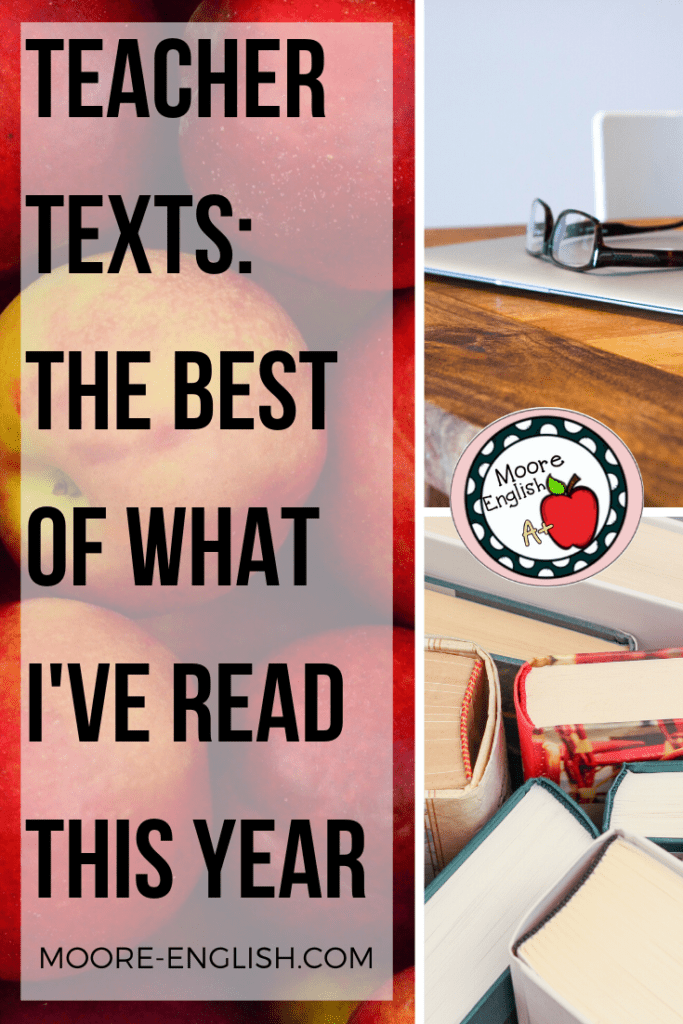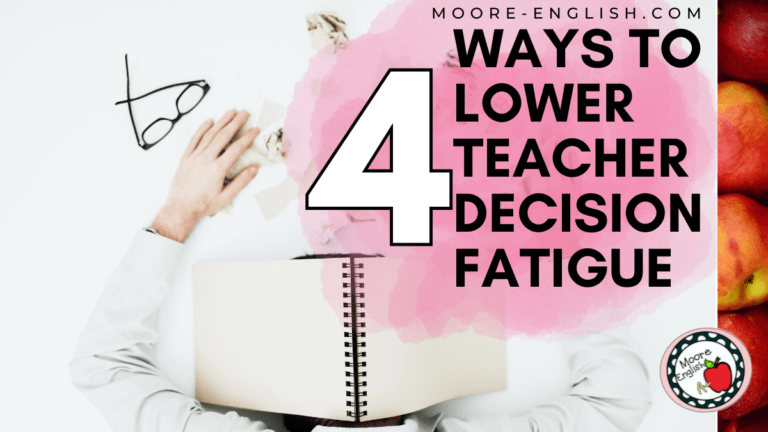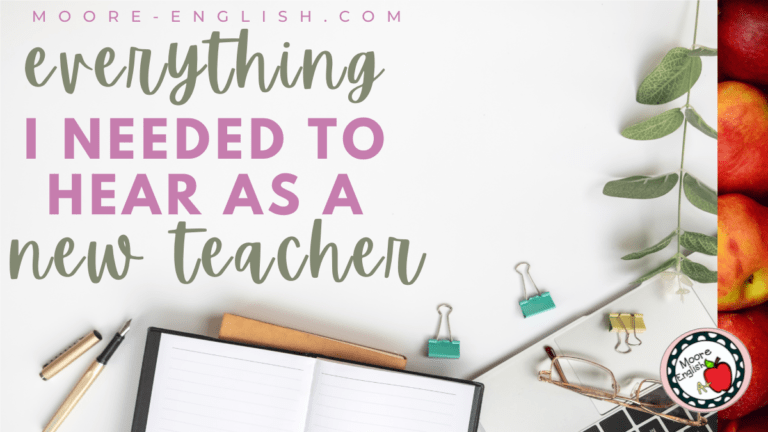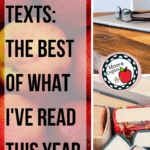November is the time of the year when we turn toward gratitude. In addition to my family, I am especially grateful to teach. There’s little I cherish as much as helping students explore their beliefs and identities. Similarly, Moore English has provided me an opportunity to explore my teacher truth. In part, that exploration comes from engaging with a growing number of educators with different experiences and philosophies. Connecting with a diverse group of educators can be challenging, invigorating, affirming, and eye opening.
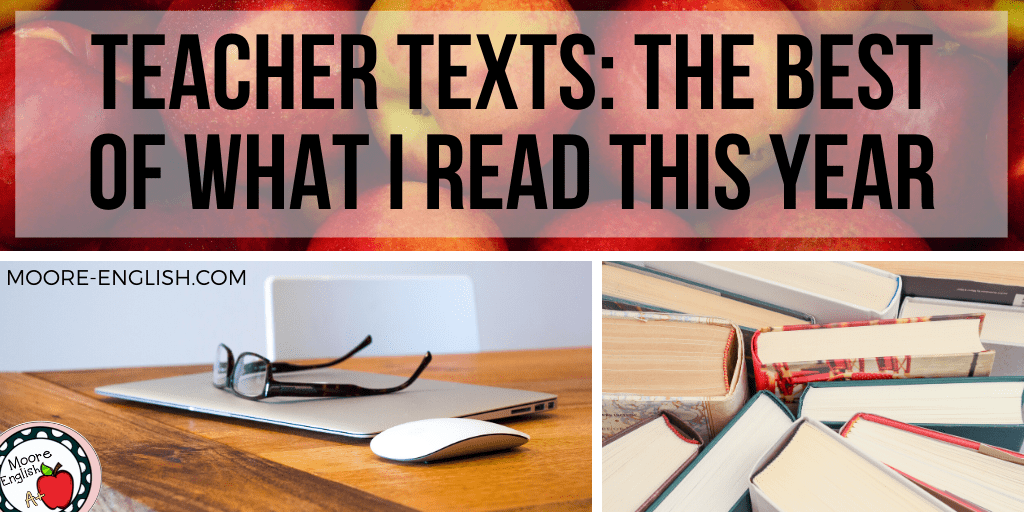
This post this post may contain affiliate links. Please read the Terms of Use.
With that in mind, I’ve collected some of the most important teacher texts I’ve read so far this year. Some I encountered via Twitter. Some are from newsletters. And some are from Pinterest while some were sent to me by colleagues.
I sought for some. And others arrived unexpectedly. Also, while I include articles I read this year, many were not written this year.
And while I’m a secondary ELA teacher, I follow lots of middle and elementary teachers, too. I have included some on this list because an instructional strategy that works…works. My range of reading is wide. And not every article was an easy read. Each of these reads provided me with some kind of meaningful insight and helped me improve as a teacher. For this reason, I am grateful for these reads and want to share them with you.
Big Idea Reads
-Firstly, I am grateful for Patricia Sacawa at Blackboard Talk. I recommend every single one of her posts because they are through, meticulous, and real. Zero fluff. This year, I was most affected by “Teacher Martyrs and Their Martyrdom.” Perhaps more than any article on this list, this article caused me to re-evaluate and reflect on my own decisions, attitudes, and actions in a profound way. In one article, Blackboard Talk caused me to reconsider my beliefs about teacher martyrdom. And that kind of challenging thought is why this read is so valuable.
-Secondly, by building on Linda Darling-Hammond’s description of what it means to be a teacher vs. how teachers are often perceived, Jacob Bennet’s “Confronting Inequity / Leveraging Teacher Knowledge” from Educational Leadership focuses on who a teacher should be and how she should be treated. Notice that both those clauses end with the passive voice (“are often perceived” and “should be treated). That’s not surprising considering how often decisions about teaching, teachers, and students come from individuals and groups that have little relevant experience. Bennet’s suggestions for transforming teaching offer hope and examples of how empowering teachers benefits everyone.
-In another article from ASCD, Michele Borba describes the “Nine Competencies for Teaching Empathy.” Empathy is one of Grant Wiggins’ and Jay McTighe’s Facets of Understanding from Understanding by Design. And its presence in every classroom is essential. Firstly, Borba suggests that empathy enters the classroom in several ways:
- emotional literacy,
- perspective taking,
- self-regulation,
- practicing kindness,
- inviting collaboration,
- growing changemakers,
- through moral identity, imagination, and courage.
Practical Reads
-Like Blackboard Talk, Teaching in the Fast Lane is another must-read for me. Alyssa’s posts often focus on topics I’d (somewhat puzzlingly) never considered: “11 Things Happy Teachers Don’t Do” or “8 Ways to be an Example for Your Students.” Alyssa’s reads are relatable, straightforward, and positive. We don’t teach the same grades. But her posts remain relevant and provide me with an alternative perspective, which is why I am grateful for these reads.
-Like Borba’s article, Christina from Mrs. Winter’s Bliss makes an argument for shifting our thinking to change our behavior. In “Turning Mistakes into Opportunities for Learning,” she suggests that making mistakes is a great goal for students. And before you laugh, read her entire argument. This read gave me a new perspective on #growthmindset and helped me re-envision goal setting in my classroom. And I’m grateful for those meaningful changes.
-For an article that is immediately useful, Matt Miller from Ditch that Textbook gives readers the keys to unlocking and using “The Secret Menu for Google Slides, Docs, Drawings and more.” While all the reads on this list provide food for thought, Miller’s article gives information that is immediately relevant and applicable. I am particularly grateful for #2. Read more about how I use Google Classroom, Google Slides, and Google Jamboard.
– “The people in the classroom who are doing most of the talking are the people in the classroom who are doing most of the learning.” This is the takeaway from Basic Girl Teaches’ post “Learning is Loud!” In this read, Jamie provides some simple strategies for engaging students in meaningful classroom dialogue. Like Miller’s article, this one has some immediately relevant and easily adaptable strategies. This article was a great reminder of best practices for any classroom, and that’s why I’m grateful for this read.
Reads for New Teachers
-I have a soft spot for reads aimed at new teachers. Even though I haven’t been a new teacher for a while, I always look forward to the August and September posts and articles welcoming and advising new teachers. These reads focus on one of the most important educational resources: new teachers. There’s something energizing about these reads, and even experienced teachers can learn something from each one. For this reason, I even have a Pinterest board dedicated to Advice for New Teachers. Here are the new teacher reads that I’m most grateful for this year.
- Like Marissa’s post, “Dear First Year Teacher Self…” from Emily at Education to the Core compiles advice for new teachers. However, while Marissa’s article uses teacher authors, Emily’s list comes from her Facebook group, so while some of the teachers are bloggers, other are not. The variety is wonderful and valuable.
- “5 More Mistakes New Teachers Make” is a follow up article for Kristy from 2 Peas and a Dog, but it is a straightforward read for new teachers. In particular, I’m grateful that Kristy emphasizes the importance of asking for help. It’s easy to feel isolated as a teacher (new or otherwise), and asking for help is the mark of a growing mind.
- “Find Your Marigold: The One Essential Rule for New Teachers” is an article from 2013 that I ignored as a new teacher. One of my college professors sent it to me, I skimmed through it, and then ignored it completely. That was a terrible choice. In this article, Jennifer Gonzalez from Cult of Pedagogy makes an argument for surrounding yourself with good people. If you surround yourself with good people, you will grow, and that’s a message for which I am grateful.
The Reason we Read
As an ELA teacher, I understand that reading across perspectives and lifestyles is essential to pluralistic thinking. Exposure promotes empathy, and empathetic leadership is invaluable. Ultimately, that’s why I am grateful for all these articles. It’s also why I will continue to read as much and as often as I can. What other titles should I add to my list? Which reads were you most grateful for this year? Let us know in the comments!


